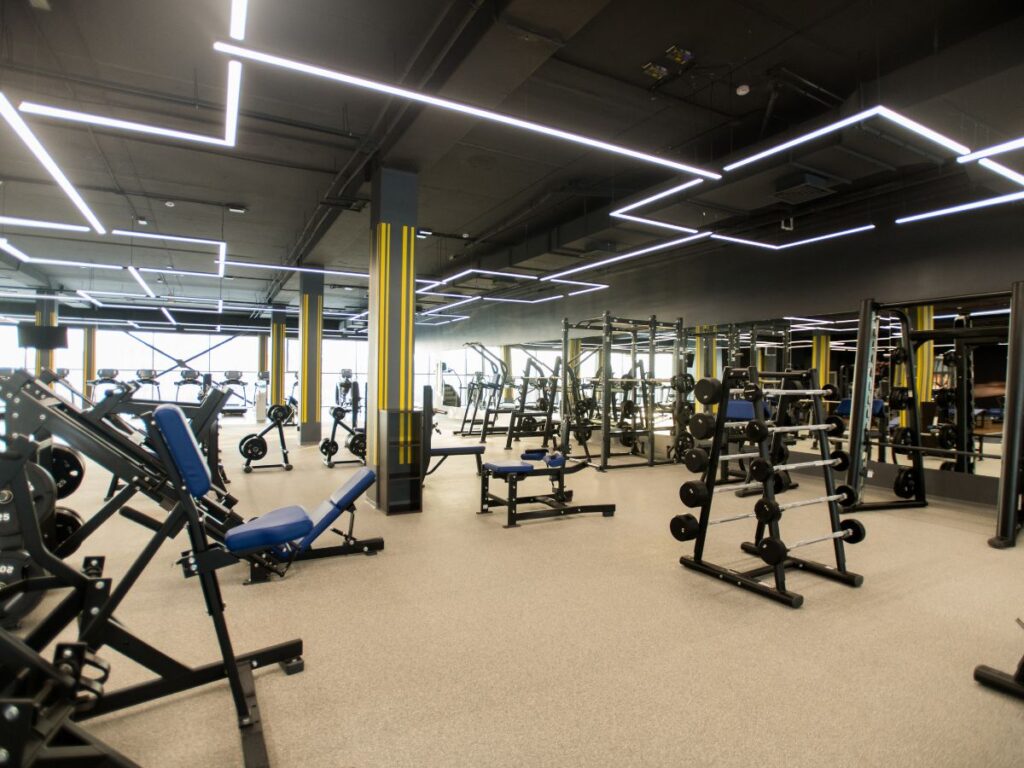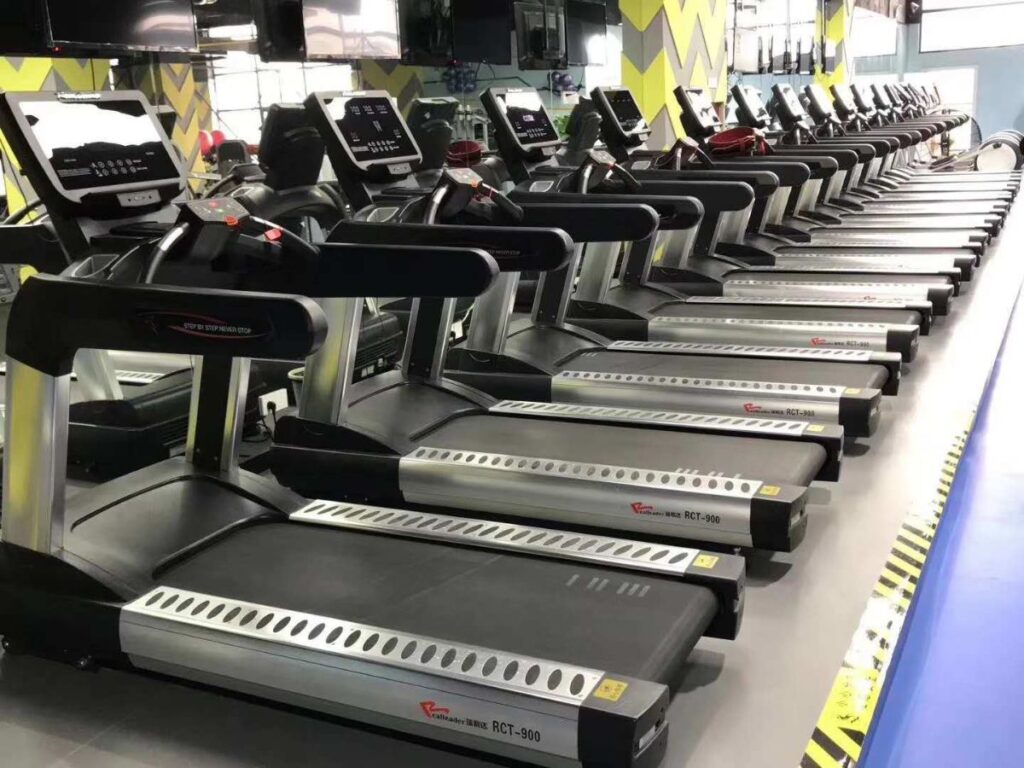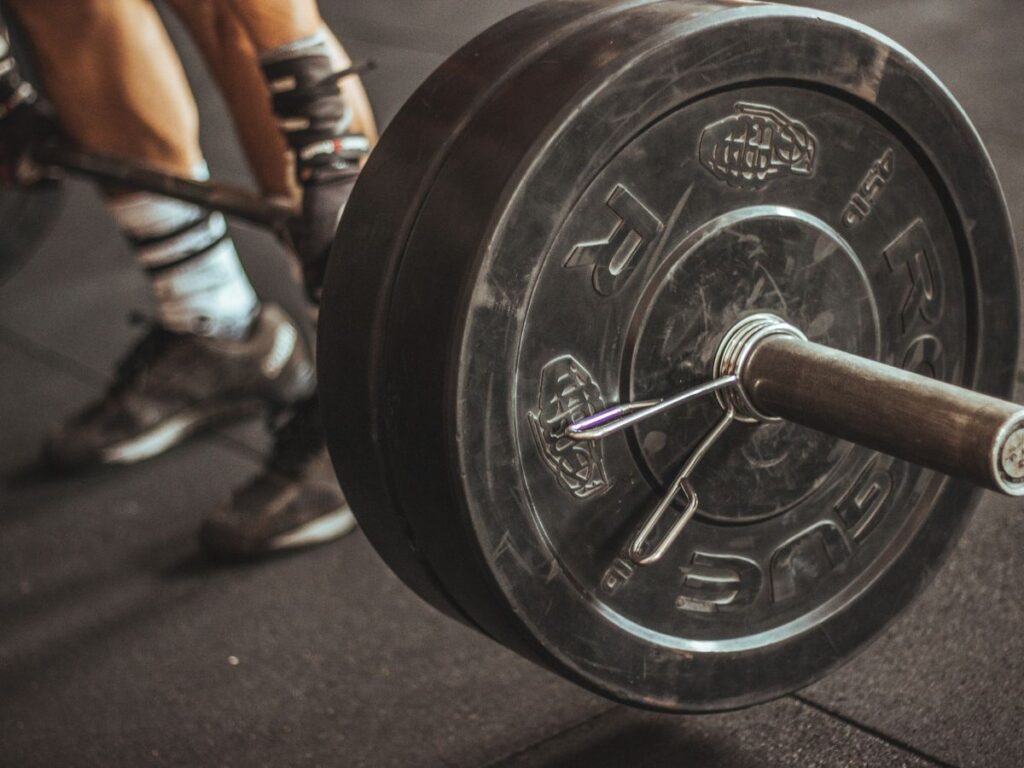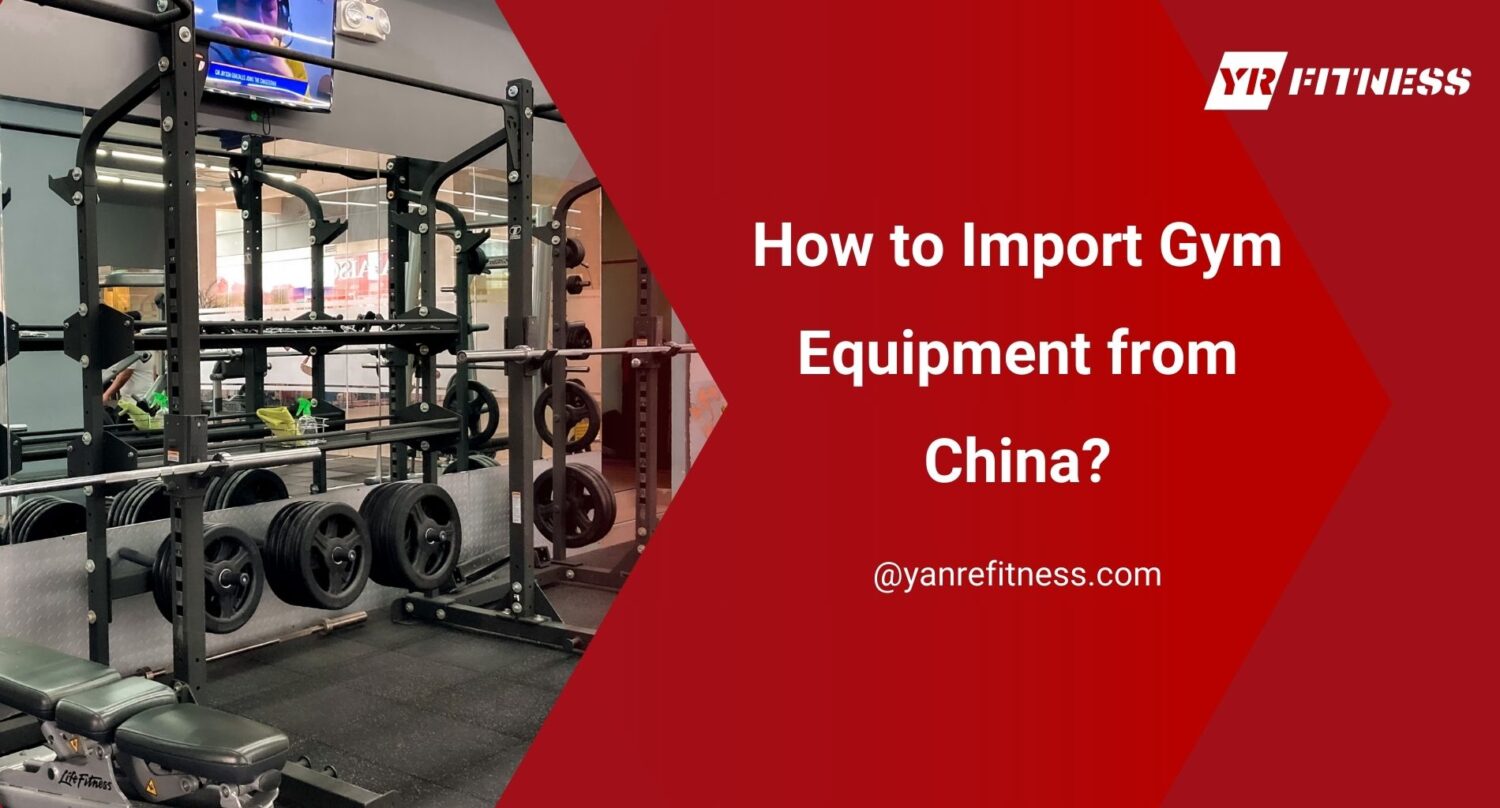I remember the first time I tried to import gym equipment for my facility, 3 machines arrived dented, and I had no idea who to call. It cost me weeks of delay and a big chunk of my budget.
That experience forced me to figure things out the hard way.
That’s why this guide exists; to help you avoid the mistakes I made. I’ve gone through multiple suppliers, messed up a few shipments, and finally figured out what works. Now I import gear regularly, at a better quality and cost.
This article walks you through everything—how to find legit suppliers, get your products shipped safely, and avoid common traps. If you’re serious about importing gym equipment, this will save you time and money.
So, let’s get started!
Table of Contents
- Step#1 Understand the Types of Gym Equipment You Want
- Step#2 Find Reliable Gym Equipment Suppliers in China
- Step#3 Request Samples and Check Quality
- Step#4 Understand Pricing Models and Hidden Costs
- Step#5 Shipping and Logistics
- Step#6 Handle Import Regulations and Documentation
- Step#7 Make Payment Safely
- Step#8 Inspection, Delivery, and After-Sales Support
- Conclusion
Step#1 Understand the Types of Gym Equipment You Want
The first time I tried to source gym gear, I made one big mistake—I didn’t know exactly what I needed.
I had a rough list in my head: a few benches, some weights, a treadmill or two. But that kind of vague thinking doesn’t work when you’re importing from China. All it does is slow you down, confuse the supplier, and open the door to costly miscommunications.
You’ve got to be crystal clear on what you’re ordering—right down to the categories, functions, and specs.
Let’s walk through how to define that:
Categorize Your Equipment Needs
Before you start comparing suppliers or requesting quotes, lock in your equipment list. Think by category. This helps you organize your priorities and choose factories that specialize in the gear you need.
Strength Equipment
This is your bread and butter if you’re targeting serious training environments or outfitting a commercial gym. Key items include:
- Free Weights: Dumbbells, barbells, weight plates (rubber-coated or cast iron)
- Racks And Benches: Squat racks, power cages, flat/incline benches
- Cable Machines: Multi-station machines, functional trainers, pulleys
Strength gear tends to be heavy-duty and bulky—plan for high shipping weights and container space.
Cardio Equipment
If your clients expect a full fitness experience, cardio matters. At YR Fitness, the common machines that they offer include:
- Treadmills: Manual vs. motorized, horsepower ratings, shock absorption
- Exercise Bikes: Upright, recumbent, or air bikes
- Rowers: Water resistance, magnetic, or air-based options
Suppliers may vary in whether they manufacture these in-house or outsource from another factory. Always check.
Functional / Studio Equipment
These are high-turnover, lower-cost items. Ideal for studios, class-based gyms, or resellers:
- Kettlebells: Vinyl-coated, powder-coated, adjustable
- Resistance Bands: Loop bands, tube bands, fabric hip bands
- Yoga/Fitness Mats: Different thicknesses, textures, and materials
It’s tempting to skip this step, but don’t. Categorizing your list is the foundation for everything that comes next, finding the right supplier, calculating costs, and avoiding surprise issues during production or shipping.
Determine Specifications
Once you’ve categorized your gear, go a level deeper. Here’s what to define for each product line:
- Required Features: For example, should the treadmill have an LED screen? Do dumbbells need hex heads? Does your squat rack need to support 1,000 lbs?
- Durability Standards: Consider whether this gear is for light home use or high-traffic commercial environments. Frame thickness, coating, bearing quality, all of it matters.
- Space and Dimension Limits: Will it fit your floor plan or your customer’s? Some cable machines are over 7 feet tall. Others need 6 feet of clearance behind them.
- Target User Profile: Are you buying hardcore lifters, casual users, rehab clients, or mixed-use? Your buyer matters—and so does how the equipment gets used day to day.
If you get this step right, everything else becomes easier. Your supplier will understand your needs, quote accurately, and produce gear that’s usable in your gym or resale market.
If you skip it? You’ll be guessing and guessing is expensive.

Step#2 Find Reliable Gym Equipment Suppliers in China
Here’s the truth no one tells you: Finding a supplier is easy. Finding a reliable one? That’s where most people fail.
When I was just starting, I assumed the supplier with the lowest price would do just fine. I didn’t ask for certifications, skipped the research, and took their word on everything. Let’s just say that shipment didn’t go well.
You don’t need to make that mistake.
In this step, I’ll walk you through exactly where to look and how to verify if a supplier is legit, before you send a single dollar.
Looking for Suppliers
Once you’re clear on what you want, it’s time to hunt down the right source. There are plenty of platforms, but not all are created equal. Here’s where to start:
- Alibaba.com: The most popular B2B marketplace. Huge selection. Use filters to narrow by verified suppliers, years active, and trade assurance options.
- Made-in-China.com: Ideal for finding niche or specialized fitness products. Great for comparing factory capabilities and certifications.
- Global Sources: Focused more on serious bulk and commercial buyers. Vetting tends to be stricter than Alibaba.
- Canton Fair (China Import and Export Fair): Want to go deep? Attend this massive trade show in person or virtually. You’ll meet manufacturers face-to-face and build long-term relationships.
- Use of Sourcing Agents: If this is your first time or if you’re importing at scale, a local sourcing agent can help navigate language, cultural gaps, and factory visits.
Verify Supplier Legitimacy
Finding a factory is easy. Finding a trustworthy one takes effort.
Don’t skip this step, because a shady supplier can cost you thousands of bad products, delays, or total radio silence after payment. Here’s what to look for:
- Business License & Certifications: Ask for a copy of their business license. They should also provide CE, ISO, or any other certifications tied to your country’s import laws.
- Years in Business: More years = more trust. Look for at least 3–5 years in manufacturing, not just trading.
- Factory Audits & Inspections: Reputable suppliers should have recent audit reports or third-party inspection records they can share.
- Customer Reviews & Trade History: Platforms like Alibaba show transaction history. Use it. If they’ve done 100+ deals, they’re probably not disappearing overnight.
Red Flags to Watch For
I’ve seen too many business owners get excited by a flashy product catalog, only to lose money or deal with a mountain of issues later. These red flags are warning signs—take them seriously.
- Unrealistically Low Pricing: If one supplier’s quote is far below everyone else’s, something’s off. They may be using inferior materials, cutting corners on safety, or worse, they are worse, baiting you in with fake pricing.
- Poor Communication or Vague Answers: If they take days to reply, dodge your questions, or give generic one-liners, that’s how they’ll treat you after you’ve paid too.
- Hesitation to Provide Samples: Legit manufacturers are confident in their quality. If a supplier refuses to send samples or keeps making excuses, run the other way.

Step#3 Request Samples and Check Quality
Now that you’ve shortlisted a few suppliers, it’s time to get your hands on the real product.
This is where things get real.
You’re not just looking at pictures anymore—you’re testing the actual gear that your clients will be lifting, pushing, pulling, or running on. That’s why samples matter. They help you confirm whether the supplier’s promises hold up in the real world.
I learned this lesson after accepting a batch of barbells without checking samples. Half of them rusted within two months. The welds cracked. I had to replace every one.
Don’t let that be you.
Ask For in Samples
If a supplier is serious about winning your business, they’ll be willing to send you a sample, either for free or at cost. Here’s what to look at closely:
- Material Quality: Ask about the steel gauge (thickness), powder coating (resistance to wear and rust), and quality of welds. You want consistent construction, no loose bolts, uneven welds, or cheap materials.
- Durability and Testing Results: Request their internal test results or load testing reports, especially for racks, benches, and moving parts on cardio machines. You need to know how the equipment performs under real use—not just how it looks.
- Finish, Branding Options, And Packaging: Inspect the overall finish. Is it smooth, textured, glossy, matte? Ask for branding samples too, especially if you plan to private label. And don’t ignore packaging—damaged gear in transit often comes from poor protection, not rough handling.
Be specific. Don’t just say, “Send me a dumbbell.” Say: “Send a 15kg hex dumbbell with rubber coating, laser logo, and retail packaging mock-up.”
The more specific your request, the better your sample—and the fewer surprises down the road.
Inspection Tips
Even if the sample looks good, that doesn’t mean the bulk order will match. That’s where inspections come in. You’re importing overseas—you can’t afford to just hope it turns out okay.
Here’s how to keep quality consistent:
- Use A Third-Party Inspection Service: Companies like SGS, Bureau Veritas, or AsiaInspection (QIMA) offer pre-shipment inspections for a few hundred dollars. They’ll check everything—from product specs to packaging—before anything leaves the factory.
- Ask For Factory Production Videos: This is especially helpful if you’re skipping the factory visit. Ask your supplier to record video of your actual product being made or packaged. It gives you visibility and shows whether they’re cutting corners.

Step#4 Understand Pricing Models and Hidden Costs
Here’s where a lot of first-time importers get caught off guard. They get a great price per unit and assume the rest will fall into place.
It won’t.
The unit cost is just the beginning. What really matters is your landed cost, the total amount it takes to get that product from a factory floor in China to your door, ready to sell or install.
If you don’t fully understand your pricing terms or overlook hidden fees, your “bargain” equipment could end up costing more than buying local.
Let’s break this down:
Price Terms: EXW vs. FOB vs. CIF vs. DDP
When you start requesting quotes, you’ll see these shipping terms all over the place. They define how much of the shipping responsibility the supplier takes on and where yours begins.
Here’s what each one means:
- EXW (Ex Works): You handle everything from the factory door onward. You’ll need to arrange pickup, export clearance, shipping, customs—everything. Lowest supplier cost, but most work (and risk) on your end.
- FOB (Free On Board): The supplier delivers the goods to the port and clears them for export. From there, you take over. This is a common middle-ground and often works well when you have a freight forwarder.
- CIF (Cost, Insurance, Freight): The supplier handles everything up to your destination port. You still take care of customs and local delivery. This is convenient, but you may have less control over the shipping cost.
- DDP (Delivered Duty Paid): The all-inclusive option. The supplier handles everything—shipping, duties, customs, and local delivery. It’s the easiest for you, but also the most expensive. Be sure to confirm exactly what’s included.
If you’re dealing with a full-service manufacturer like YR Fitness, they may offer DDP quotes to simplify things for overseas buyers. But even then, read the fine print.
Costs to Consider
Once you know your shipping terms, you still need to account for a handful of hidden or overlooked costs. These don’t show up in the product quote, but they hit your bottom line just the same.
Here’s what to budget for:
- Freight and Shipping: Sea freight is cheaper per unit, but slower. Air freight is fast, but costly. Rates also fluctuate seasonally, especially around Chinese New Year and holiday rush periods.
- Import Duties & Tariffs: Every country has its rates, based on product category (HS codes). You’ll need to calculate this for each type of gym equipment you bring in.
- Customs Broker Fees: A licensed broker can help clear your goods through customs without delay. Their fees are usually worth it, especially if you’re importing them for the first time.
- Port Charges And Unloading: These include terminal handling fees, port storage, unloading labor, and container drayage if needed.
- Warehousing Or Local Delivery Costs: Once your shipment lands, where does it go? If you need storage or a final-mile delivery team, add that to your numbers.
Step#5 Shipping and Logistics
So you’ve found your supplier, agreed on pricing, and confirmed your order. Now comes the part that can either go smoothly or derail everything: shipping.
Shipping gym equipment is not like shipping T-shirts. You’re moving heavy, oversized, and often oddly shaped products across continents. And if you don’t get the logistics right, it can wipe out your profit margin or delay your opening by weeks.
This step is where smart importers separate themselves from the pack:
Choose the Right Shipping Method
Most gym owners or dealers will use sea freight, especially for larger orders. But depending on your timeline and cargo size, you have a few options to choose from.
Sea Freight:
This is the most cost-effective method for heavy fitness gear. It’s slower, but ideal when you’re moving pallets or full gym builds.
- Full Container Load (FCL): You book the entire container. Best for large-volume orders where you can fill a 20ft or 40ft container. Lower cost per unit, better control, and less handling = less damage risk.
- Less than Container Load (LCL): You share container space with other shippers. Useful for smaller shipments, but comes with more touchpoints—more chances for delays or damages.
Sea shipping typically takes 25–45 days from port to port, depending on origin and destination.
Air Freight:
If speed is your top priority—and the shipment is small—air freight gets it done fast.
- Great for accessories like resistance bands, small parts, or urgent backorders.
- Much more expensive by weight and volume.
- Transit time is usually 3–7 days.
Use it wisely. Air freight can eat up your profit if you’re not careful.
Hiring a Freight Forwarder
If you’re not experienced with international logistics, don’t try to manage it solo.
A freight forwarder acts like your logistics partner. They coordinate everything between the factory and your final destination—and they’re worth every cent. Here’s what they handle:
- Booking Containers: They secure space with shipping lines, organize pickups, and schedule transit.
- Documentation: They prepare and manage all the paperwork—Bill of Lading, Packing List, Commercial Invoice, and other export docs.
- Customs Clearance: Whether it’s in China or your home country, they deal with import regulations, duties, and any required inspections.
Working with a freight forwarder gives you visibility, peace of mind, and fewer chances of something falling through the cracks.
Step#6 Handle Import Regulations and Documentation
This is the part no one wants to deal with—but trust me, you have to.
I remember the first time my shipment got stuck at the port because I was missing a basic document. It cost me two weeks of delays and hundreds in storage fees. Worst part? It could’ve been avoided with one email.
Importing gym equipment isn’t just about buying and shipping—it’s about clearing it legally and smoothly into your country. Without the right paperwork, your container can get held up, rejected, or hit with unexpected penalties.
Let’s make sure that doesn’t happen to you.
Key Documents Needed
Your supplier or freight forwarder will handle most of these, but you need to know what they are and double-check that everything is complete and accurate.
- Commercial Invoice: This outlines the value of your goods, item descriptions, and payment terms. Customs use it to assess duties and taxes.
- Packing List: Details what’s in each box or pallet—quantities, weights, and dimensions. It helps inspectors verify that what’s listed is actually what was shipped.
- Bill of Lading: This is the official shipping document that proves ownership of the goods. You’ll need it to release your shipment once it arrives.
- Certificate of Origin: Confirms the country where the goods were manufactured. Some countries have trade agreements that affect duties based on origin.
- Compliance Certificates (e.g. CE, ISO): If you’re importing into regulated markets (like the EU), your gym equipment must meet safety and quality standards. Ask your supplier for CE marking, ISO certifications, or any specific documents required in your region.
Understand Your Country’s Import Rules
Each country has its own rules, and they’re not always easy to find in one place. But knowing the basics can save you a ton of time and money.
USA
- Duties & Tariffs: Use the HTS code (Harmonized Tariff Schedule) to calculate duties for each product. Rates vary by item type—plates, treadmills, and bands are all classified differently.
- FDA Concerns: While most fitness equipment doesn’t fall under FDA oversight, any items with electronic displays, batteries, or materials in contact with skin may require extra clearance.
European Union (EU)
- CE Mark: Required for almost all fitness equipment. This proves that the product meets EU health, safety, and environmental standards.
- VAT: Be ready to pay Value Added Tax (typically 20–22%) at the time of import.
- EORI Number: Businesses importing into the EU must register for an Economic Operator Registration and Identification (EORI) number. Without it, your shipment won’t clear customs.
Australia
- Customs Clearance: Import permits may be required depending on the material. Wooden crates, for example, must meet fumigation standards.
- Quarantine Inspection: Australia has strict biosecurity laws. Your shipment may be inspected for pests or contaminants, especially if it includes rubber, foam, or untreated wood.
Step#7 Make Payment Safely
When you’re wiring money halfway around the world to someone you’ve never met, you need to be sure it’s going to the right place, for the right reason, under the right terms. And if you don’t set payment expectations up front, things can go sideways fast.
I’ve paid the wrong company before. Once, I wired a deposit to what turned out to be a hacked email account impersonating my supplier. That lesson cost me $5,000—and it’s not one I want you to learn the hard way.
Here’s how to protect yourself and keep things professional:
Common Payment Terms
Most Chinese manufacturers follow a standard payment structure, especially if you’re ordering under your own brand or in bulk. Here’s what you’ll usually see:
- 30% Deposit, 70% Balance Before Shipment: This is the most common payment term. You pay 30% upfront to start production. The remaining 70% is due after final inspection, before your goods are released for shipping.
- Escrow Payments (for First Orders): If you’re ordering through platforms like Alibaba, you can use escrow-style payment services (like Alibaba Trade Assurance) to hold funds securely until the goods are shipped or received.
Safest Payment Methods
There are multiple ways to pay. Some are secure but slow. Others are fast but risky. Here’s how they stack up:
- Bank Transfer (T/T): The most common method for international trade. It’s fast and widely accepted, but once it’s sent, there’s no reversing it. Only use this after you’ve verified the supplier and reviewed final documentation.
- Alibaba Trade Assurance: A great option for first-time orders. Your money stays protected in Alibaba’s system until you confirm receipt or shipment milestones are met. Trade Assurance also offers dispute resolution if things go wrong.
- Letter of Credit (L/C): Best for large orders or when working with a new supplier on a high-risk product. Your bank guarantees payment to the supplier only if all agreed conditions are met, such as specific delivery dates, documents, and inspection reports.
For your first few orders, it’s okay to be cautious, even a little paranoid. Once the relationship is proven and communication is consistent, you can consider more flexible terms.
Step#8 Inspection, Delivery, and After-Sales Support
This last step can make or break the entire import process.
You’ve put in the work—sourcing, negotiating, sampling, shipping. But if you don’t finish strong with proper inspection, delivery prep, and after-sales planning, all that effort can still unravel.
I learned this the hard way when I accepted a shipment without a final inspection. Half the plates arrived scratched, two benches were missing bolts, and it took weeks of back-and-forth to sort it out. Ever since then, I’ve treated this step like insurance—it protects everything you’ve already invested.
Let’s wrap this up the right way.
Pre-Shipment Inspection
Before you send that final 70% payment, get eyes on the goods.
Whether you do it yourself, send a sourcing agent, or hire a third-party service, a pre-shipment inspection is a must. It gives you a final layer of control before your products leave the factory floor. Here’s what to check:
- Quantity: Make sure the exact number of units matches your purchase order. Don’t assume—verify.
- Labeling: Check for correct product labels, safety stickers, branding, and any packaging requirements specific to your market.
- Finish And Packaging: Look for scratches, rust spots, or sloppy welding. Confirm that protective packaging is secure, especially for cardio equipment or items with glass displays.
Delivery and Local Handling
Once your shipment clears customs, it’s your responsibility to get it from the port—or local warehouse—to your final destination.
Don’t leave this to chance. Gym equipment isn’t just heavy—it’s awkward, oversized, and can easily be damaged without proper unloading and placement. Here’s what to plan for:
- Coordinate Delivery: Work with your freight forwarder or local logistics partner to schedule drop-off. If your order is going to a gym, store, or warehouse, make sure staff are ready on-site.
- Prepare the Space: Ensure there’s enough room for unloading and staging. You may need forklifts, dollies, or pallet jacks—especially for racks, cable machines, or full cardio units.
If you’re opening a new facility or restocking inventory, don’t schedule launch day or sales promotions until your gear is on the floor and inspected.
After-Sales Support
Even with the best supplier, things can go wrong. Parts can arrive damaged. Items can be missing. Components can fail after a few weeks of use.
This is where after-sales support separates the good suppliers from the great ones. Here’s what to lock in upfront:
- Warranty Terms: Ask for written confirmation of warranty periods. For example, 1 year on moving parts, 3 years on the frame. Know what’s covered—and what’s not.
- Replacement Policy: What happens if a bench leg is cracked or a treadmill console stops working? Will they ship you a part? Cover local repair costs? Require return shipping?
Negotiate this before payment, not after something breaks.
If you’re building a long-term relationship, a supplier who stands behind their product becomes a valuable partner, not just a vendor.
Conclusion
Importing gym equipment isn’t just possible, it’s profitable when done right.
We covered how to choose products, find the right supplier, handle shipping, avoid traps, and finish strong. Every step gives you more control, more savings, and fewer headaches.
I’ve been where you are—second-guessing, hesitating. Don’t let fear hold you back.
Start small. Stay smart. Build your edge.
If you knew it would work, would you do it?
Let’s talk about your first shipment. Contact us today, and we’ll help you hit the ground running.
Related articles:





